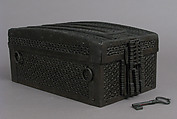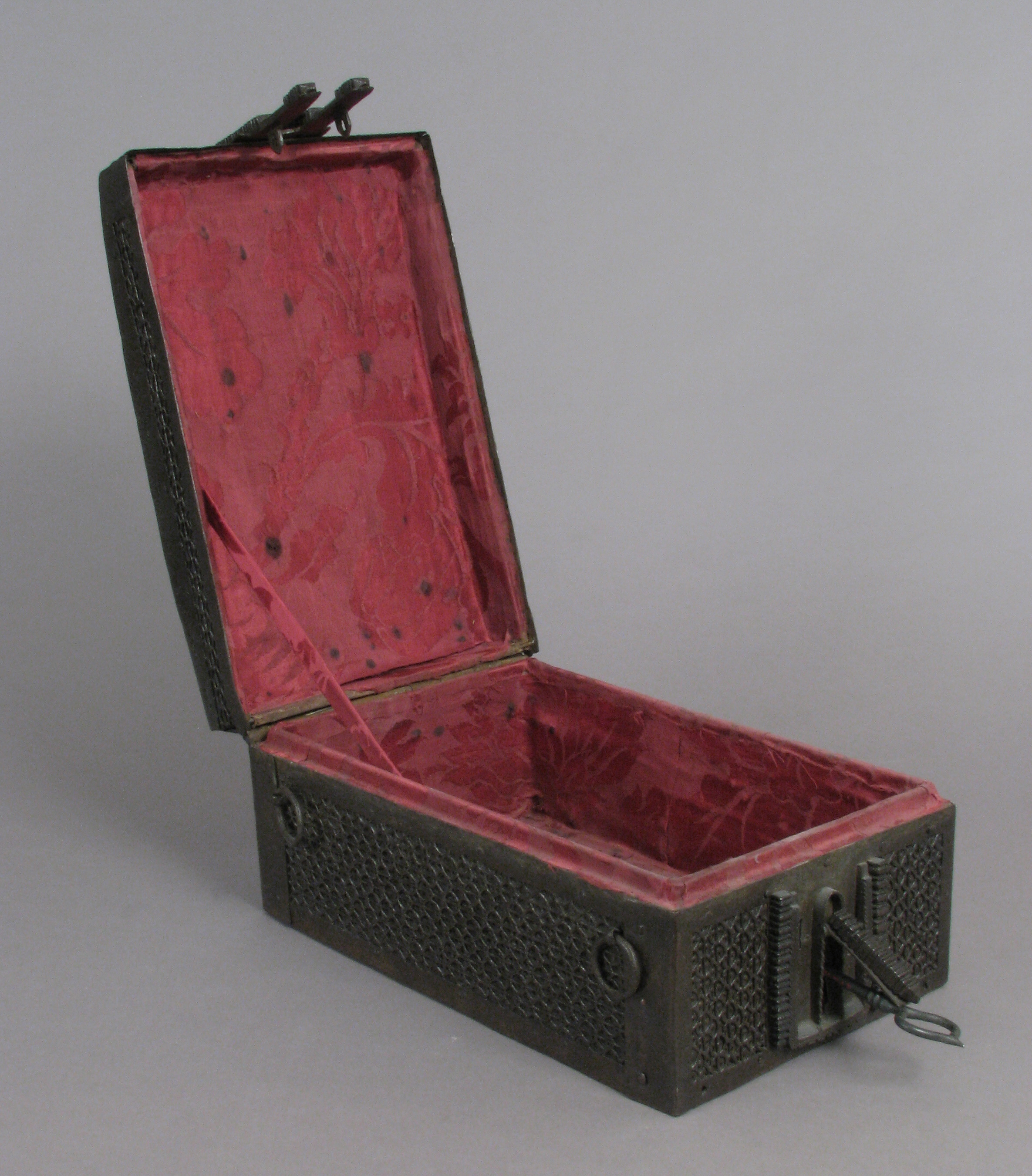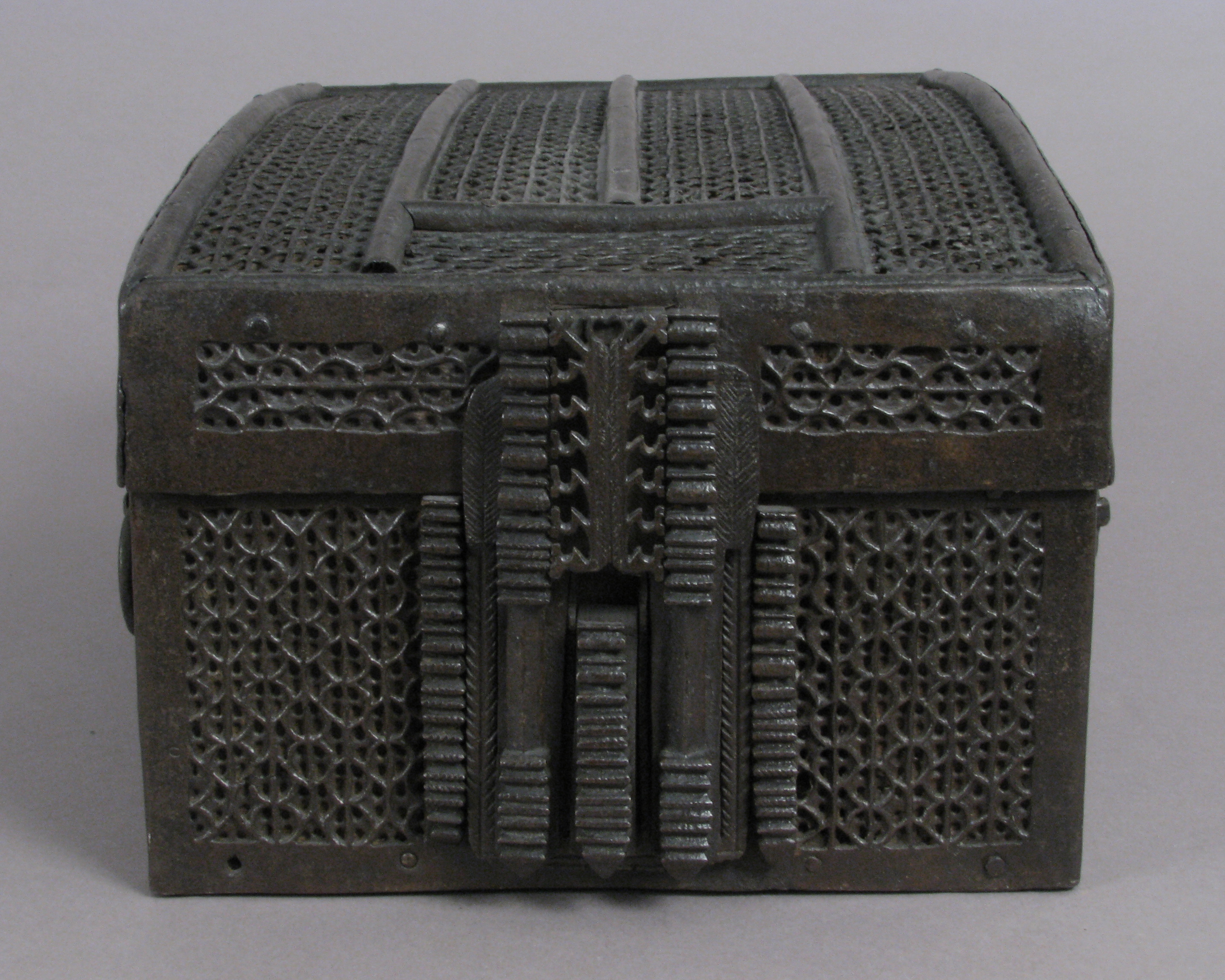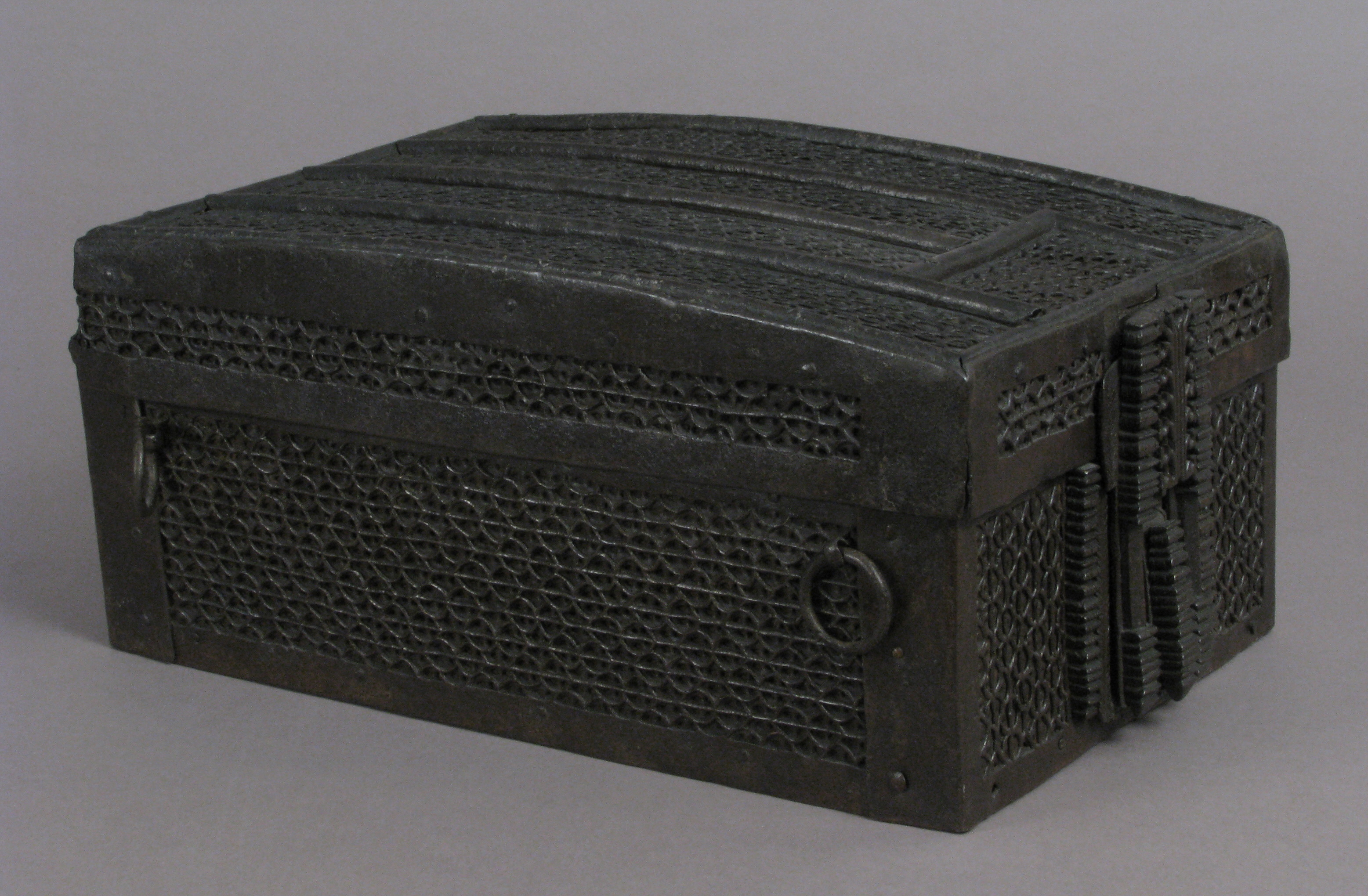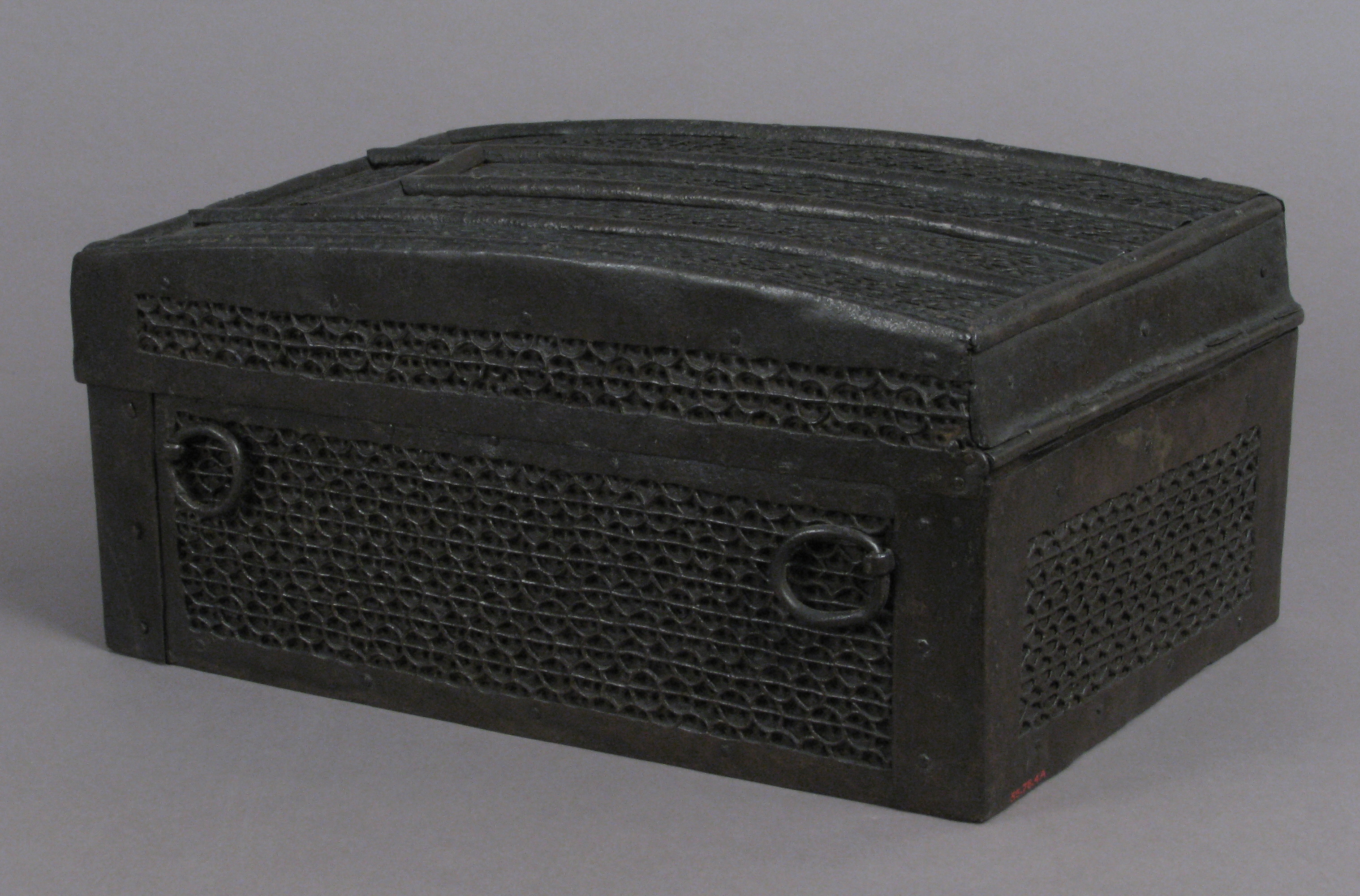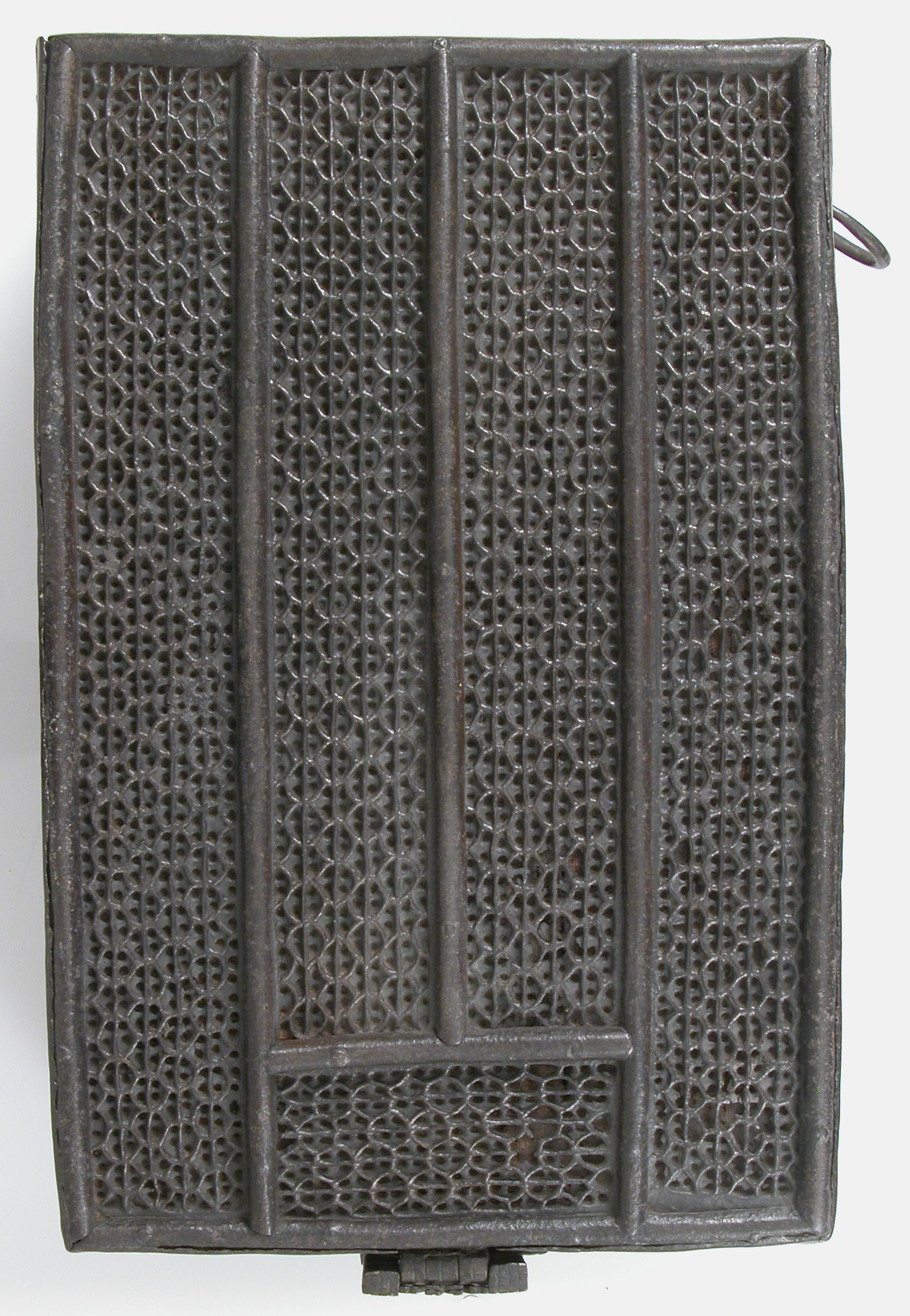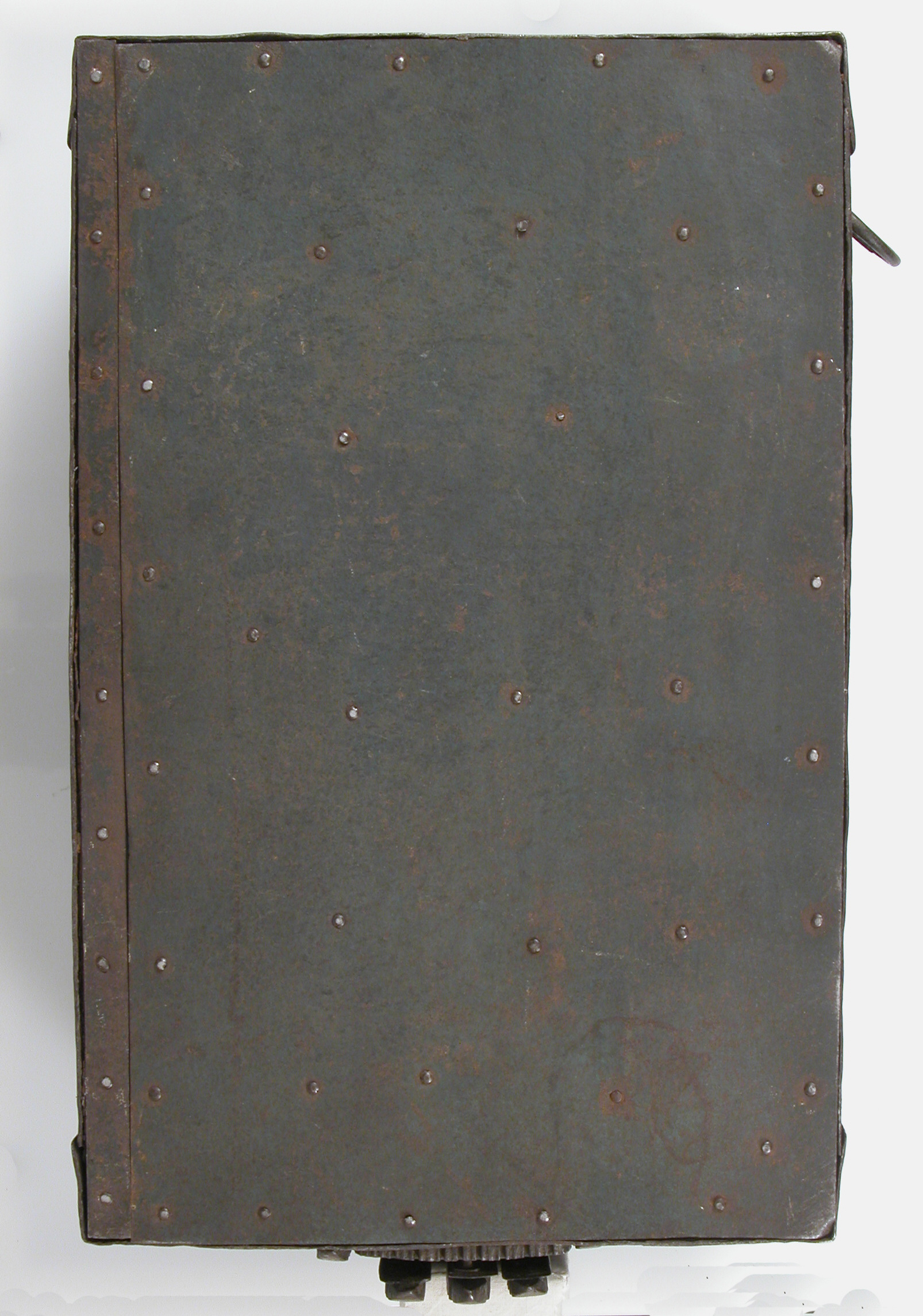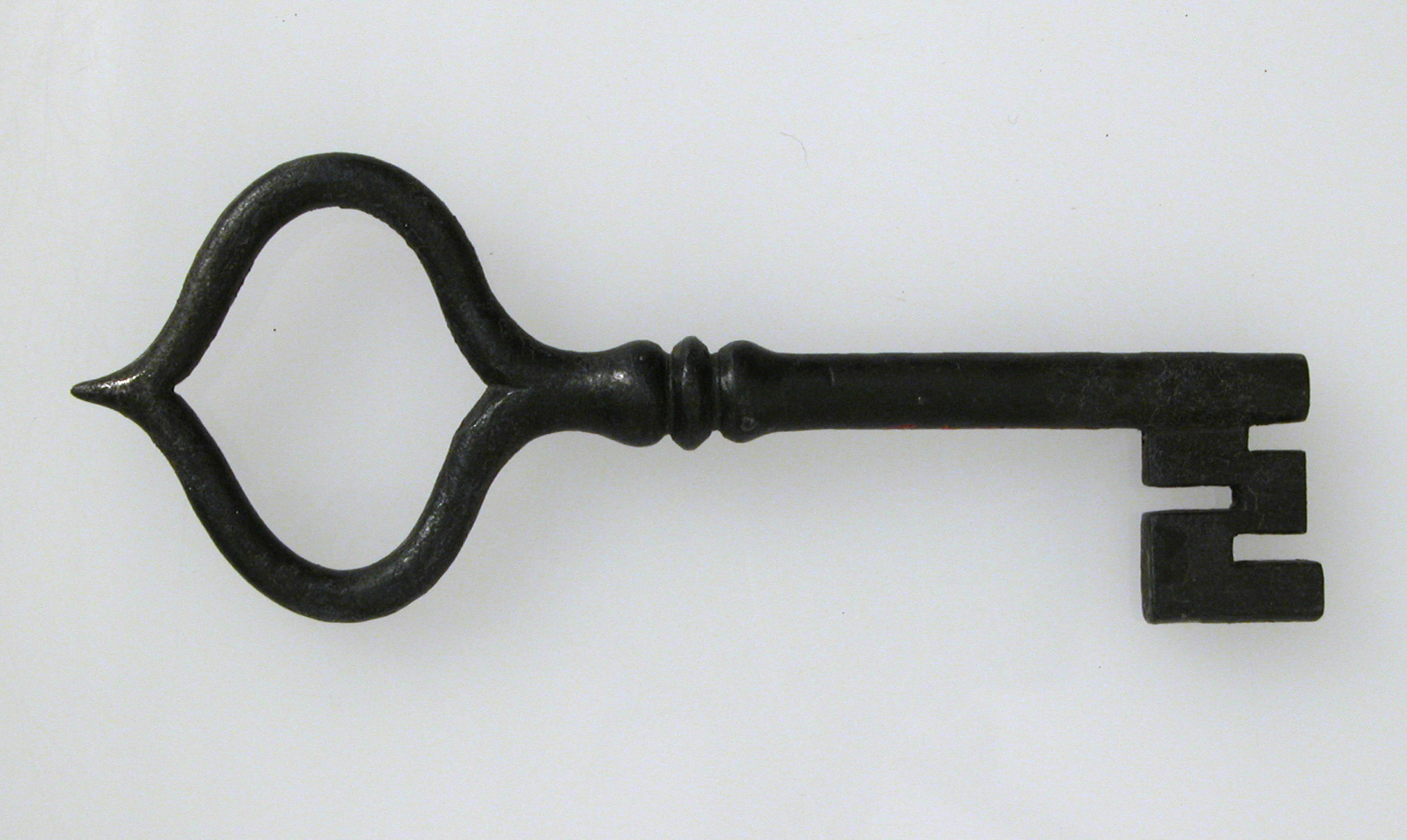Coffret
Not on view
Coffrets and caskets, which were of great importance for the storage of household goods, were also valued by medieval travelers, who frequently carried with them a major portion of their possessions. For this purpose, containers of a wide variety of shapes and sizes existed, all intended to secure the safety of the objects enclosed. Iron caskets and coffrets of wood, covered with leather or other material and bound with iron, were more common.
The present coffret is an example of one of the most common and universal types of caskets produced during the fifteenth century and is known as coffret à mailles or coffret à la maniere d’Espagne. Such coffrets were made of a wooden core, covered with rough linen, as here, or dyed leather. On the outside there were two layers of iron openwork, one superimposed on the other allowing the decorative cover of the core to show through. Iron bars reinforced the cover, and a deceptively elaborate, though rudimentary, lock spanned the width of one end of the coffret. Two rings permitted it to be attached by thongs or chains to a saddle, or, possibly, to be secured inside a larger chest too heavy to be easily stolen. Since it has been suggested that these coffrets were used for the transport of precious possessions, it is interesting to speculate that the suspension of the coffret within a larger chest might have been intended to protect these valuables from otherwise unavoidable damage caused by buffeting and jouncing.
Due to rights restrictions, this image cannot be enlarged, viewed at full screen, or downloaded.
This artwork is meant to be viewed from right to left. Scroll left to view more.
